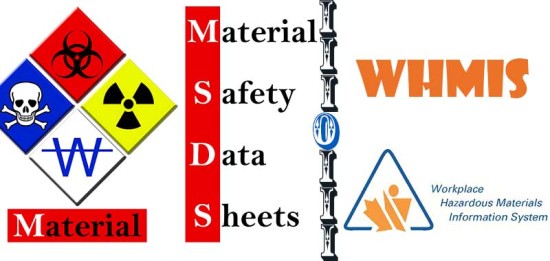Information about MSDS and WHMIS

Chemistry is one of the most ancient subjects studied by humans. Aboriginal people developed ancient methods of manipulating chemical substances such as dyes to make clothing, salts to preserve food, aspirin extracted from willow bark, and vitamin-C by boiling pine needles.
In modern times chemistry has advanced to include an array of many chemical substances used in almost every facet of our lives including the manufacturing of various materials, fertilizers and pesticides used in agriculture, common household cleaners, prescription medicines, and etc.
As a result of the widespread use of thousands of chemical substances a system was needed in order to ensure the safe handling of certain chemical substances. For example, manufacturers of household cleaning products are required to present a product label on the exterior of containers to caution users of the potential hazards of using the product. These product labels are designed to educate the user of certain dangers associated with the product such as flammability, caustic effects, the volatility of compressed gases, poisonous substances, radio activeness, or bio-hazardous materials.
In addition to a product label each chemical substance requires a Material Safety Data Sheet or MSDS. The MSDS is a useful information sheet that includes vital information about chemical substances. The MSDS provides information such as handling, storage, and proper disposal.
There are many environments that require workers to use various chemical substances. To prevent injury and ensure the safety of the workers certain legislation has been enforced such as Workplace Hazardous Material Information System or WHMIS. This mandated legislation ensures workers are educated about the substances they work with and have adequate training. WHMIS also ensures that all controlled substances have product labels in all official languages and that a Material Safety Data Sheet for each substance.

